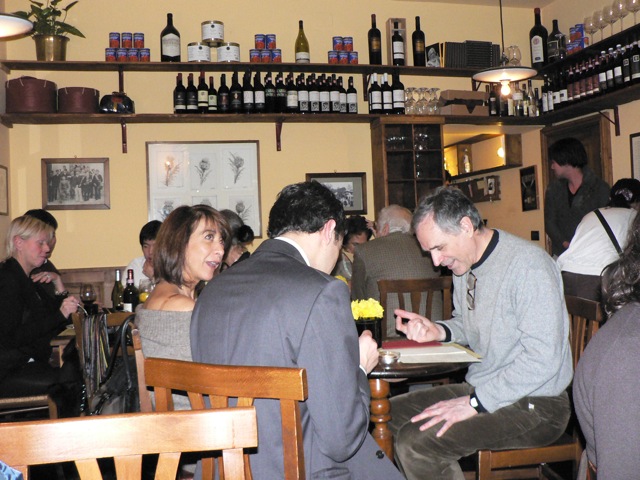The Poetry of Roast Beef alla Fiorentina
Travelers for whom I’ve planned trips may know that I am vegetarian, though my restaurant reviews go beyond my personal choices and are suited to all omnivores who love good food. But this recipe (“Ricetta N. 500”) for Roast Beef alla Fiorentina (which the Florentines call Roast Beef all’Inglese) was so eloquent and evocative that I read it many times. And could taste the lemon peel, the sage, the rosemary and garlic. As Fabio Picchi, owner of three of our favorite Florentine restaurants says : “carnivori, mangiate poca carne ma buona! ” (“carnivores, eat little meat but very good meat”.) Which of course is what Slow Food and Michael Pollan, amongst others, have been recommending for some time.
Here is a lyrical recipe (written in Tuscan) that celebrates a delicious dish, to be enjoyed (as Picchi urges) in moderation and mindfulness.
RICETTA N° 500
Roast beef alla fiorentina
che i fiorentini chiamano all’inglese
Se carnivori, mangiate poca carne ma buona!
In casa, per il roast-beef, usiamo staffarlo di un trito di rosmarino, salvia, aglio, scorza di limone, sale e pepe, per poi cuocerlo rapidissimamente in un tegame di alluminio con mezzo centimetro d’olio, arrosticciolandolo ben bene in tutti i suoi lati per non più di quindici minuti complessivi.
Spento il fuoco e spostato altrove il tegame, lasciamo sempre che un po’ di tempo passi così che i liquidi, uscendo dal foro della staffatura, si combinino con l’olio, formando così una deliziosa sugagna con cui sporcherete tutte le fette di carne che finemente taglierete.
Per altro metodo, evitate la staffatura arrostendo il solito pezzo di scannello nel solito modo, riducendo eventualmente i tempi se per caso userete un pezzo di “magro scelto” di ridotte dimensioni. Solo negli ultimi due minuti aggiungerete, nel caldissimo olio, due spicchi d’aglio, qualche foglia di salvia, un non-niente di rosmarino e la giusta dose di sale e pepe. Dopodiché fermate il tutto con una grossa noce di burro e un mezzo sugoso limone. Rigirate poi la carne, senza forala, con un mestolo di legno, permettendo a tutta l’arrosticciolatura di sciogliersi dentro le acidule untuosità, acquisendo così un bel colore nocciola. Fetta dopo fetta, mangiando questo delizia, riformulerete il silenzioso convincimento del “poca ma buona”. Fabio Picchi
Translation : Carnivores, eat little meat but very good meat!
To make this at home, we use minced rosemary, sage, garlic, lemon peel, salt and pepper, inserting them into little indentations in the meat, and cooking the dish very quickly in an aluminum pan with a half centimer of olive oil, turning often to braise it on all sides for no more than 15 minutes.
Turn off the heat and move the pan elsewhere, allowing the meat to rest. The juices will leave the meat and will combine with the oil to make a delicious little sauce that you can spoon on each slice that you have cut very thinly.
In the alternative, cook the meat (especially if it is a smaller piece, and lean) for 12 minutes or so, turning it often, and then add to the hot oil two minced garlic cloves, a few minced sage leaves, a small amount of minced rosemary and the right quantity of salt and pepper. Cook for three minutes. Add a walnut sized piece of butter and the juice of half of a juicy lemon. Turn off the heat immediately. Turn the meat without perforating it, using a wooden spoon, allowing the herbs to be absorbed into the acidic-oily sauce and to turn the meat a lovely nut color. As you enjoy this dish, slice by slice, consider and internalize a personal conviction to “(eat) just a little, but make it good”.

